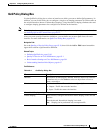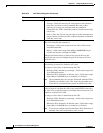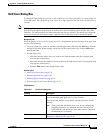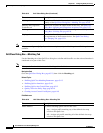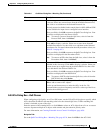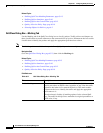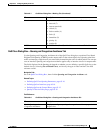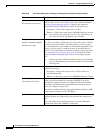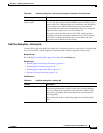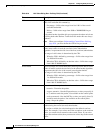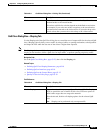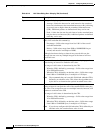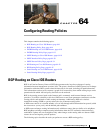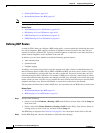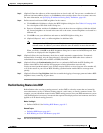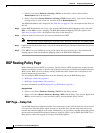
63-29
User Guide for Cisco Security Manager 4.4
OL-28826-01
Chapter 63 Configuring Quality of Service
Quality of Service Policy Page
QoS Class Dialog Box—Policing Tab
Use the Policing tab of the QoS Class dialog box to configure rate limits on the traffic in a selected QoS
class. Excess traffic is either dropped or transmitted with a different (typically lower) priority.
Navigation Path
Go to the QoS Class Dialog Box, page 63-23, then click the Policing tab.
Related Topics
• Defining QoS Class Policing Parameters, page 63-17
• Defining QoS on Interfaces, page 63-10
• Defining QoS on the Control Plane, page 63-12
• Quality of Service Policy Page, page 63-19
Field Reference
WRED Weight for Mean
Queue Depth
The exponential weight factor to use to calculate the average queue
size. Use this option when defining WRED instead of tail drop (queue
limit) for this class. When the queue size exceeds the value determined
by this weight factor, WRED randomly discards packets until the
transmitting protocol decreases its transmission rate to ease congestion.
Exponent values range from 1 to 16. The default is 9.
This option is best suited for protocols like TCP, which respond to
dropped packets by decreasing the transmission rate. We recommend
that you do not change the default unless you determine that your
applications would benefit from the change.
Table 63-8 QoS Class Dialog Box—Queuing and Congestion Avoidance Tab (Continued)
Element Description
Table 63-9 QoS Class Dialog Box—Policing Tab
Element Description
Enable Policing When selected, enables you to configure Class-Based Policing to
control the maximum rate of traffic for this class. Security Manager
uses a two-token bucket algorithm, which includes a defined violate
action that is performed when neither bucket can accommodate the
incoming packet.
When deselected, disables all policing options for the selected QoS
class.



